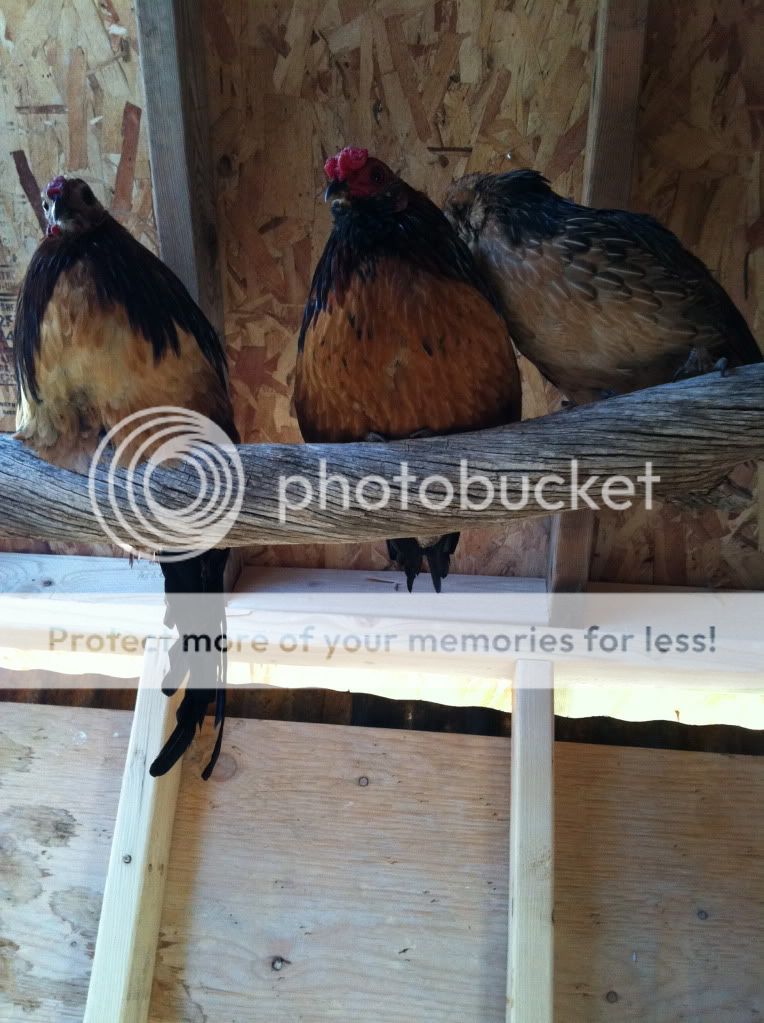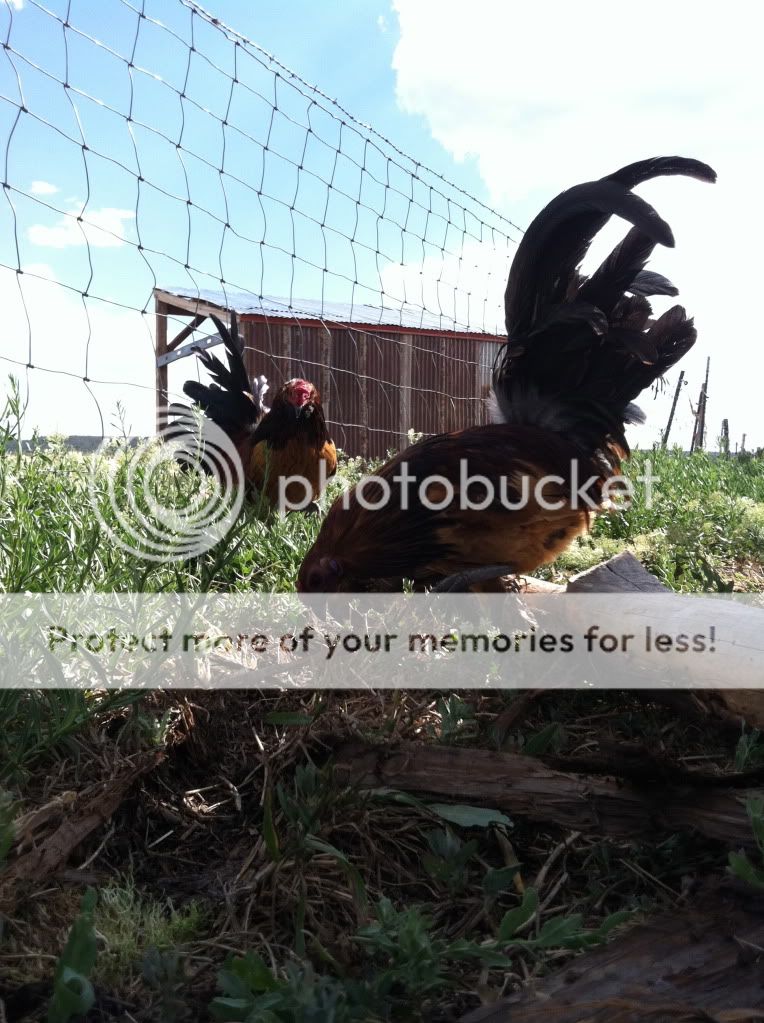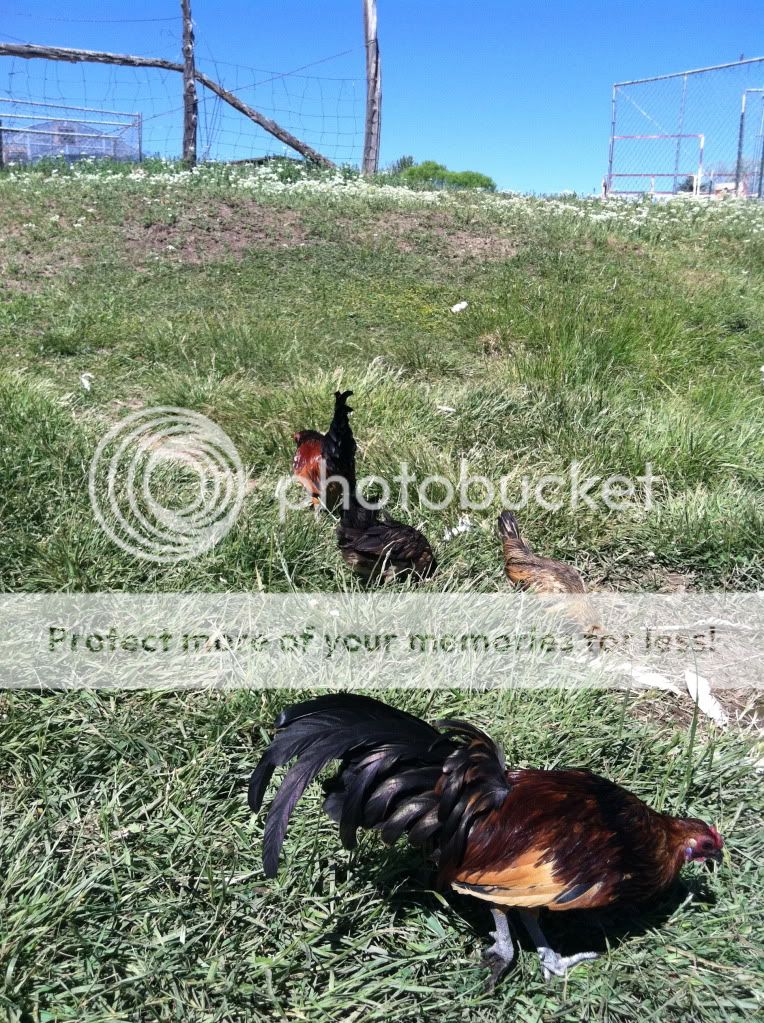I can hardly wait to get some Colloncas
Navigation
Install the app
How to install the app on iOS
Follow along with the video below to see how to install our site as a web app on your home screen.
Note: This feature may not be available in some browsers.
More options
You are using an out of date browser. It may not display this or other websites correctly.
You should upgrade or use an alternative browser.
You should upgrade or use an alternative browser.
I heart Rapanuis
- Thread starter Resolution
- Start date
They are my some of my favorite birds. My lovely Colloncas girl, Lilac, lays very large almost round blue greyish eggs pretty much every day. I plan on hatching some EE's from her very soon.
Hey guys,
seems like you know alot about those ancient breeds. what strain would I get if I wanted to breed something laying really colourful (not washed out pastel) blue or green eggs, and where the roosters are QUIET? And preferrably tame and disease resistant?
I know, a tall order, but any input is appreciated! Thanks!!
seems like you know alot about those ancient breeds. what strain would I get if I wanted to breed something laying really colourful (not washed out pastel) blue or green eggs, and where the roosters are QUIET? And preferrably tame and disease resistant?
I know, a tall order, but any input is appreciated! Thanks!!
There are several different races of domestic fowl known as "Rapa Nui", the Koro Sea; Kiri Kiri; Raraku, Tapu, the Spice Island and Wallikiki Basket Bantams and composites between any and all of them. More than a few strains of Rapa Nui will be composites with South American breeds like the Collonca and Paco as well.

Recently, I had two pairs of composite ( aforementioned strain) Rapanui shipped to Colorado from New England. They arrived when snow and freezing wind were still weekly occurrences. Even once the sun transformed the landscape it took them a few more months to venture out of their cote. There are seventy some standard sized domestic chickens running about the place as soy free egg sales help support the operation. The Rapanui are so tiny in comparison, it's not difficult to imagine why there is such a disconnect between hatchery domestic stock and cultural treasure oddity. The egg flock, regardless of breed, don't wander far from where they are fed though they have free range to do as they please. They are heavy and pondering and not very bright but with gentle dispositions and an overall good chicken attitude.

The Rapanui- they are a different creature altogether.
They don't come readily to food and remain perched within their cote for many more hours of the day than one may expect. Their eggs fit perfectly in the quail egg cartons.

Today they stroll about the place in a tight little covey of two pairs. The males have the "X-Mas Island" phenotype- a bright orange body with wide purple collars, highly iridescent violet blue tails and iridescent purple mauve and bronze orange shoulders. When they stand beside the antique weathered tin siding cotes -they are perfectly camouflaged and the hens are impossible to see in the grass.
The females are coloured like francolins or coturnix quail with really fine vermiculations and striation with fully feathered faces and no sign of wattles or combs.
Both sexes exhibit blue grey feet and legs. They don't make much noise- one rooster has a moan of a crow- with no real syllables- sounds more like a frog crossed with a button quail. The other male sings whenever he makes an appearance in the barnyard but never in the pasture. His voice has cadence and syllables of a Coturnix crossed with that of bantam rooster.

One hen " Honey" is partially Kiri Kiri. You can identify this by her blue jay shaped top-knot and her long slender bill. She talks alot- always singing.
The other hen "Lucky" is a purebred Spice Island. I've never heard her make a sound unless chased.

The two males are composite Basket Bantam with Koro Sea sires. One rooster "Rusty" is very much a Pacific Junglefowl in shape and morphology with the elongated tail so characteristic of Pacific Junglefowl with hybrid green JF ancestry. Rusty has the same or very similar exquisite colouration as "Rufous" who differs from Rusty in that he has the winterized face and abbreviated body shape of the Koro Sea/ Quechua/Quail Bantam.
Ostensibly, these four birds will form the foundation of a closed composite flock unique to this estate. We will add a few more Rapanui sired composites- from Renee Caldwell eventually- but after that no additional genetics will be bred into the line.
The F2s & F3s from the Rapanui Project roosters and hens Kermit / Resolution sent to Renee are just now coming of age and they are precious! Just a little quick background on these birds: Kermit / Resolution described the roosters as (Kiri Kiri Mapuche x Ponape) and (Kiri Kiri Miro Raraku) (although I have seen the same roosters now described as Koro Sea and Dragonbone respectively); the hens were described as Raraku. Additionally high quality collonca and "quechua" were added to help diversify the genes in emerging stewardship project flocks - specifically to increase the prevalance of rumplessness and tinted eggs.
"Rusty"'s genetics are clearly at play in this rooster - F2 "Calypso".
Here he is as a lanky teen last summer. His clearly has the length of the rooster Kermit described as dragonbone.
 He is standing with his half-sister "Moira" Evidently the Dragonbone rooster was split for gold & silver and his birchen (E^R) was hiding the wildtype (e+) e-loci gene.
He is standing with his half-sister "Moira" Evidently the Dragonbone rooster was split for gold & silver and his birchen (E^R) was hiding the wildtype (e+) e-loci gene. Over the last six months he has filled out quite nicely and here he is with several of the up and coming generation, Snowy Yellow and Enya.
Moira is half-sibs with Oona (same mother, Rupa - a black collonca) who is a dead ringer for Kermit's "Honey" minus the tail

Finally, Calyspo and Oona have a daughter who is on the verge of laying. Her name is Katara.

Quote:
*Sigh*
Reading the original text of this quote...
Let me correct:
Not Kiri Kiri...Kikiriki is the name of the breed-type.
Not Paco...Chaco is the name of the breed-type.
Yes, Ramo (patriarch) was described in a zillion ways, all contradicting one another. Either way, he's been a great father of the many black-skinned, black-boned breed projects I have going and he's a well-loved bird. I am particularly interested in the result that of some of his chicks are three times his size...
Wonderful bird.
*Sigh*
Reading the original text of this quote...
Let me correct:
Not Kiri Kiri...Kikiriki is the name of the breed-type.
Not Paco...Chaco is the name of the breed-type.
Yes, Ramo (patriarch) was described in a zillion ways, all contradicting one another. Either way, he's been a great father of the many black-skinned, black-boned breed projects I have going and he's a well-loved bird. I am particularly interested in the result that of some of his chicks are three times his size...
Wonderful bird.
I second that! He's got the whole package - gorgeous AND gentlemanly!! Calypso has the same personality and appears to be producing dark skinned offspring.
- Dec 6, 2014
- 33
- 1
- 22
Anyone with Huastecs or Black Olmecs for sale?
New posts New threads Active threads
-
Latest threads
-
-
-
-
Reuniting Hatched Cygnets with Swan Parents
- Started by Vicki Leigh
- Replies: 0
-
-
-
Threads with more replies in the last 15 days
-
-
-
-
Can I get some help from someone with careless neighbours who own dogs.
- Started by RiDaGeckoGuy
- Replies: 102
-
-

